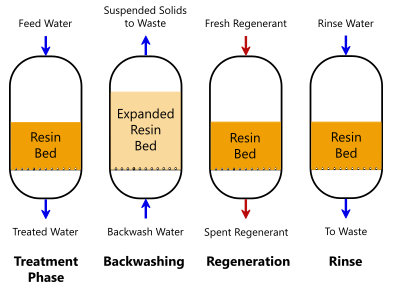M270 PFAS Treatment for Municipal Water Systems
M270 PFAS Treatment for Municipal Water Systems
Blog Article
Innovative PFAS Treatment Solutions for Safer Water
The increasing occurrence of PFAS contamination in water materials requires an essential evaluation of cutting-edge treatment options. Additionally, emerging bioremediation techniques provide an even more sustainable technique to dealing with PFAS challenges. pfas management.
Summary of PFAS Contamination
PFAS contamination has actually arised as a considerable environmental and public wellness worry. Per- and polyfluoroalkyl materials (PFAS) are a team of artificial chemicals understood for their perseverance in the atmosphere and human body, leading them to be frequently described as "forever chemicals." These compounds have been commonly used in numerous industries, including firefighting foams, water-repellent textiles, and food packaging, primarily as a result of their water- and grease-resistant residential properties.
The widespread use of PFAS has actually resulted in their detection in dirt, water products, and even in the blood of human beings and pets. Research studies have actually connected PFAS direct exposure to numerous wellness concerns, including developing results in infants, body immune system dysfunction, and numerous kinds of cancer. Additionally, the ecological perseverance of these compounds complicates their destruction and elimination, raising problems about long-lasting environmental effects.
Regulative bodies are increasingly applying stringent guidelines to check and reduce PFAS degrees in drinking water and other ecological mediums. As awareness of PFAS contamination grows, it has actually become vital for communities and sectors to seek effective treatment services to minimize direct exposure and guard public health.
Advanced Filtration Technologies
As the seriousness to deal with PFAS contamination intensifies, advanced filtering innovations have emerged as a pivotal part in the remediation initiatives intended at getting rid of these relentless chemicals from water resources. These innovations take advantage of sophisticated systems to effectively target and capture PFAS compounds, which are infamously immune to conventional treatment techniques.
One of one of the most encouraging approaches is using granular turned on carbon (GAC), which adsorbs PFAS particles as a result of its high surface location and permeable framework. This approach has actually been commonly carried out in both municipal and commercial setups, demonstrating significant reductions in PFAS focus. Additionally, ion exchange resins have obtained traction, specifically designed to precisely bind PFAS ions from water, therefore promoting their elimination.
Membrane filtering modern technologies, such as reverse osmosis and nanofiltration, additionally show effectiveness in PFAS removal by literally separating pollutants from water - pfas management. These systems can attain high degrees of pureness, making them ideal for alcohol consumption water applications
Chemical Treatment Advancements
Many chemical treatment developments are being discovered to successfully resolve PFAS contamination in water products. One promising method entails the use of advanced oxidation processes (AOPs), which use effective oxidants such as ozone, hydrogen peroxide, or chlorine dioxide incorporated with UV light to break down PFAS compounds right into less damaging compounds. This method has actually demonstrated efficiency in lab setups, Going Here revealing possible for scalability in real-world applications.
Another ingenious strategy is the growth of ion-exchange resins specifically developed to target PFAS. These resins can precisely adsorb PFAS substances from water, permitting their elimination throughout therapy processes. Recent advancements have actually enhanced the efficiency and capability of these resins, making them a desirable alternative for water therapy centers.
Furthermore, researchers are exploring using chemical representatives like persulfate and ferrous ions to improve the destruction of PFAS in polluted water. These agents can induce chemical responses that help with the break down of persistent PFAS substances.
Emerging Bioremediation Methods
Recent innovations in chemical treatment innovations have led the way for discovering bioremediation strategies as a feasible alternative for attending to PFAS contamination. Bioremediation takes advantage of the all-natural metabolic procedures of microbes to degrade or change toxins, making it an attractive technique for tackling consistent impurities like PFAS.
Arising techniques in bioremediation include using genetically crafted microbes that can specifically target and break down PFAS substances. These microbial pressures are being developed for their boosted deterioration abilities, enhancing YOURURL.com the performance of the removal procedure. Additionally, researchers are checking out the possibility of plant-assisted bioremediation, where specific plant varieties might uptake and withdraw PFAS from polluted dirt and water.
One more encouraging method is the application of bioaugmentation, which involves presenting useful microbes into infected environments to enhance the destruction of PFAS. This approach can assist in faster remediation timelines and enhance general efficiency.

Governing Frameworks and Criteria
An extensive regulative framework is important for efficiently taking care of PFAS contamination and ensuring public wellness protection. The increasing acknowledgment of per- and polyfluoroalkyl substances (PFAS) as toxic wastes has actually prompted various federal and state agencies to develop requirements that govern their visibility in water supplies. The United State Environmental Protection Agency (EPA) has actually developed health advisories and is pursuing setting enforceable limitations for PFAS in drinking water.
State-level regulations vary considerably, with some states embracing more stringent guidelines than those recommended by the EPA. These policies usually consist of optimum contaminant levels (MCLs) for certain PFAS compounds, reference surveillance requirements, and reporting obligations for water utilities. Additionally, arising structures concentrate on the remediation of polluted websites, emphasizing the requirement for efficient therapy modern technologies.

Conclusion
To conclude, the growth and application of innovative PFAS treatment solutions are essential for dealing with the prevalent issue of water contamination. Advanced filtering technologies, chemical therapies, and emerging bioremediation strategies jointly present a complex approach to properly reduce and break down PFAS degrees. As regulative structures proceed to progress, incorporating these modern technologies will be important to safeguard public health and wellness and recover the stability of polluted water sources, inevitably adding to a cleaner and safer atmosphere.
Report this page